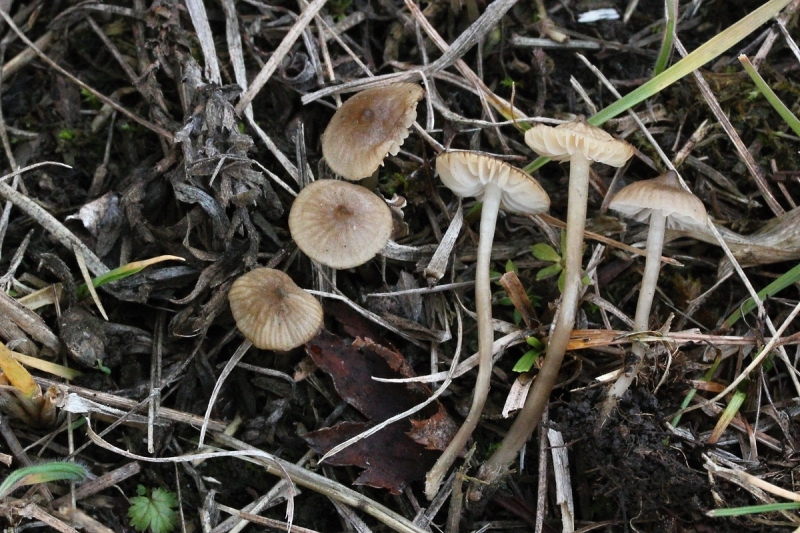Mycena atropapillata Kühner & Maire 1938
Synonyms:
Marasmiellus atropapillatus (Kühner & Maire) Singer, Lilloa 22: 302 (1951)
Biotope
It is a rare fungi that grow in autumn in dry grasslands, most often prefers steppes, preferably on basal soils.
Macroscopic and microscopic features
Klobouk: 10-15 mm in average, at first conical, later convex, papillar, shiny, hygropahnous, grey-brownish, with edge lighter, papilla always dark coloured.
Lupeny: at first white, later light grey with edge concolorous.
Třeň: 20-50 x 1,5-2,5 mm, cylindrical, shiny, sometimes a bit pruinose at the apex, in the upper part whitish, in the lower part grey-brownish, rooting.
Dužnina: with neutral taste and smell.
Microscopy: spores 7,9-9,7 x 4,8-5,7 μm, broadly ellipsoid, apical, smooth, inamyloid. Cheilocystids are 21-49 x 2,5-7,5 μm, narrow, sometimes branched.
Recommended literature
G.Robich (2003)-Mycena d´Europa
G.Robich (2016)-Mycena d´Europa vol.2
The genus Mycena s.l.(2016)- Arne Aronsen, Thomas Læssøe
In our herbarium
available

 english
english
